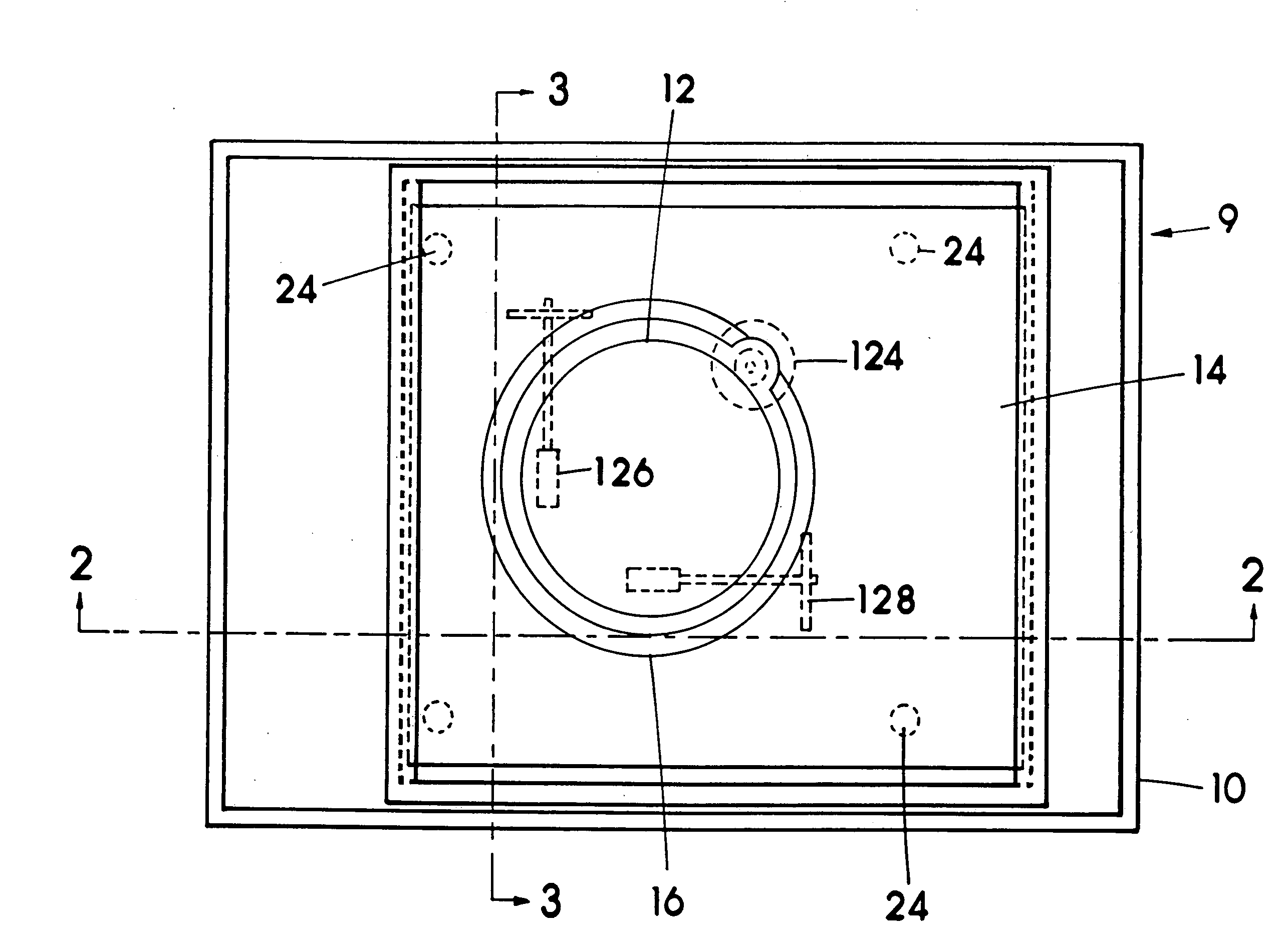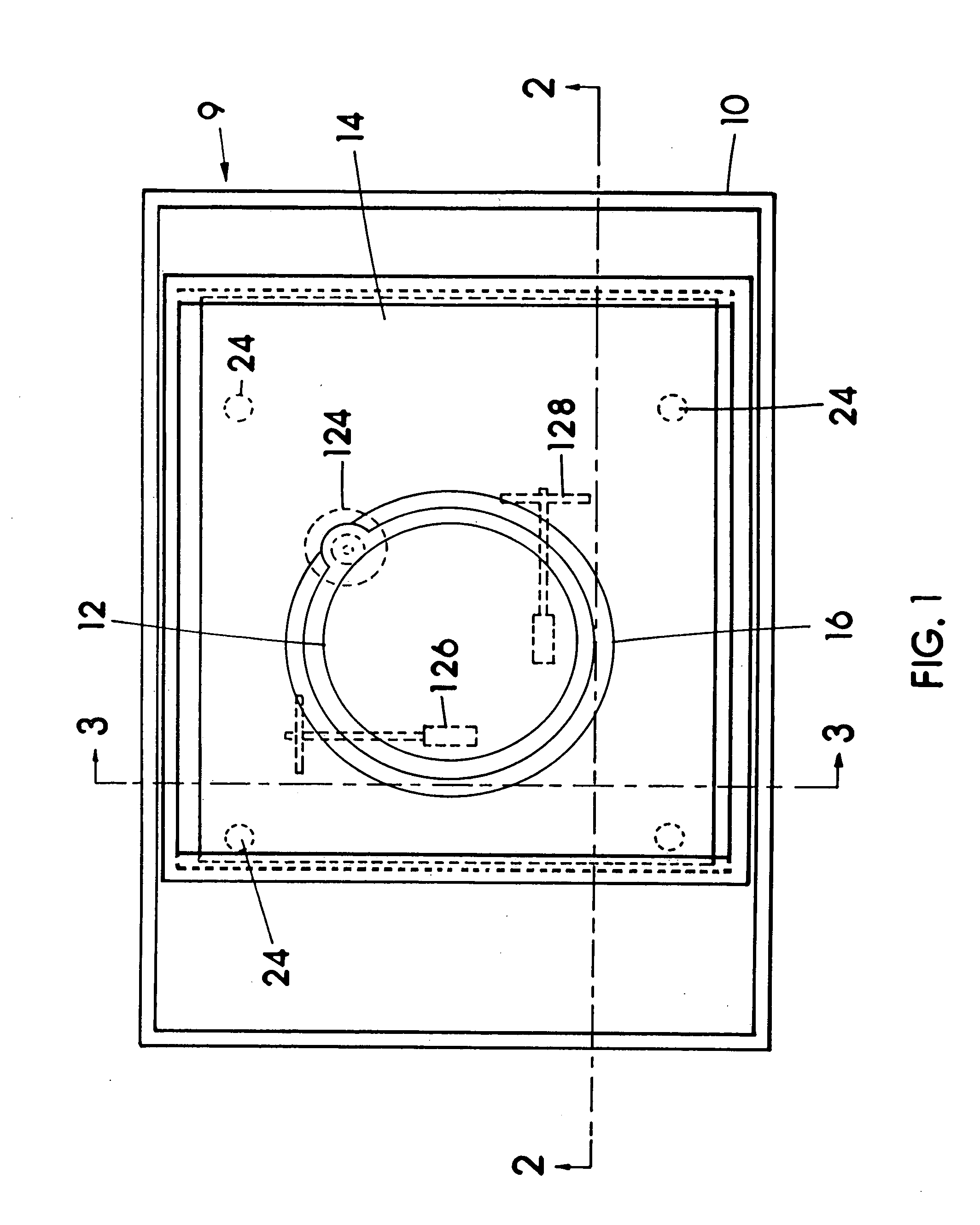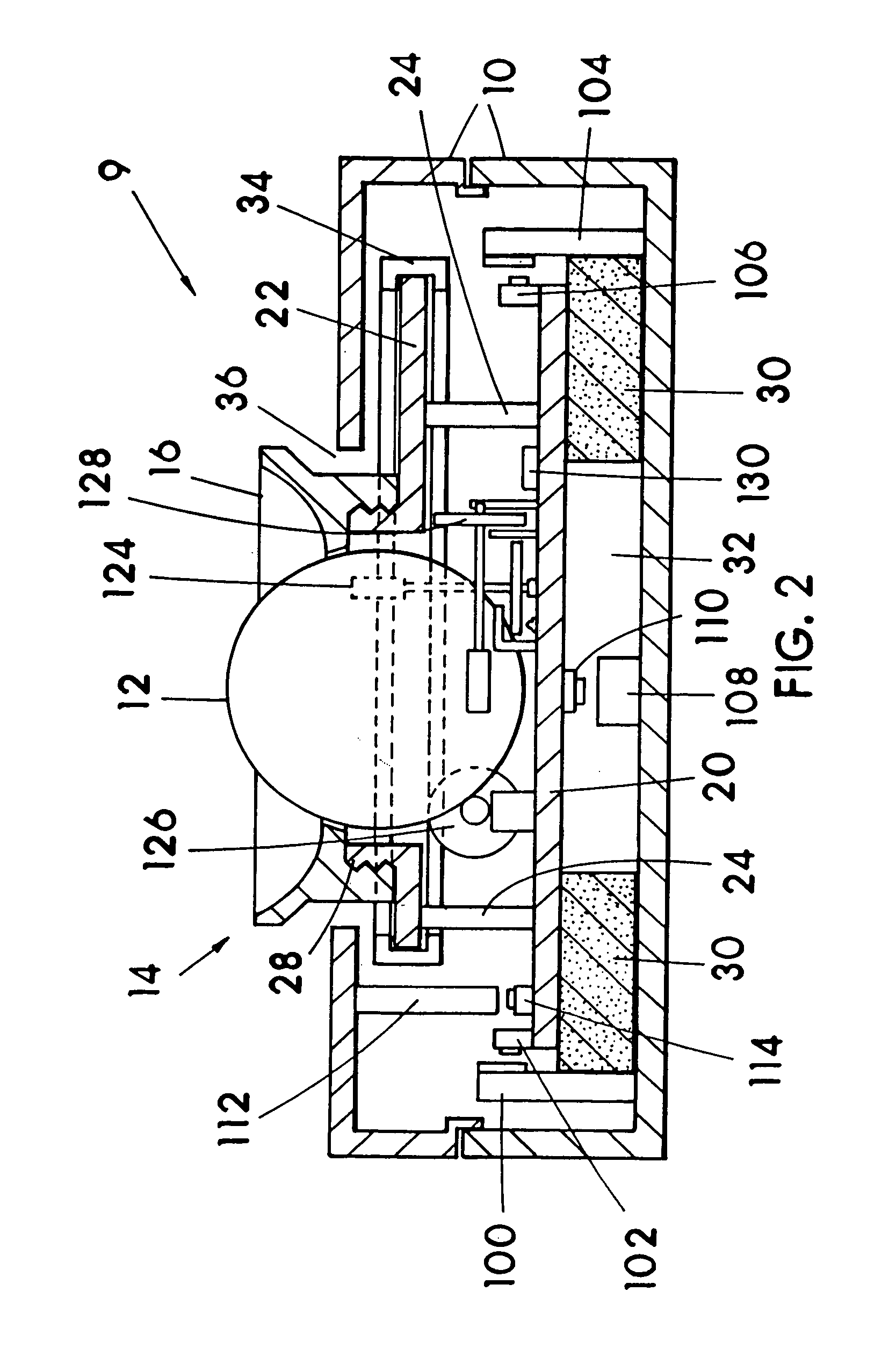Image controller
a mouse-type controller and image technology, applied in the field of image controllers, can solve the problems of increased manufacturing cost, affecting the desirability and value of items, and cost of manufacture ultimately affecting the desirability and value of items, and achieve the effect of great ease of us
- Summary
- Abstract
- Description
- Claims
- Application Information
AI Technical Summary
Benefits of technology
Problems solved by technology
Method used
Image
Examples
embodiment 9
[0103] Referring now to the drawings in general, and particularly to drawing FIGS. 1 through 11 for a description a trackball-type embodiment 9 exemplifying principles of the invention. Joystick-type embodiments further exemplifying the principles of the invention are then described as additional preferred embodiments of the invention.
[0104] With reference to FIGS. 1-4 in particular wherein trackball-type embodiment 9, being a hand operable 6 DOF controller for outputting control information is illustrated showing a rectangular housing 10 which is considered a reference member relative to which is operated trackball 12 which in this example is the hand operable single input member operable in full six degrees of freedom. FIGS. 2-3 being cross-sectional views of the FIG. 1 embodiment showing housing 10 which can at least in part support, retain and protect moveable carriage 14.
[0105] As may be appreciated already from the above writing and drawings, carriage 14 is supported at least...
embodiment 200
[0120]FIG. 13 shows an exploded view of joystick embodiment 200 of the current invention exhibiting structuring enabling use of a membrane sensor sheet 206. All 6 DOF operations of the input member shown as joystick-type handle 202 (comprised of upper handle part 202.2 and lower handle part 202.1) relative to the reference member shown as shaft 204 are translated to specific locations on membrane sensor sheet 206.
[0121] Shown at the bottom of the drawing is shaft 204 which may or may not be mounted to many different base-type or other structures. Shaft 204 is shown as generally cylindrical and substantially aligned, for purposes of description, along the yaw axis. Shaft 204 is substantially hollow to allow passage of the membrane tail, wiring or electrically connecting material, and is made of a generally rigid and strong material such as injection molded acetal plastics or steel etc. Shaft 204 has fixed to one end a short extending pedestal 210 and fixed to pedestal 210 is pivot ba...
PUM
 Login to View More
Login to View More Abstract
Description
Claims
Application Information
 Login to View More
Login to View More - R&D
- Intellectual Property
- Life Sciences
- Materials
- Tech Scout
- Unparalleled Data Quality
- Higher Quality Content
- 60% Fewer Hallucinations
Browse by: Latest US Patents, China's latest patents, Technical Efficacy Thesaurus, Application Domain, Technology Topic, Popular Technical Reports.
© 2025 PatSnap. All rights reserved.Legal|Privacy policy|Modern Slavery Act Transparency Statement|Sitemap|About US| Contact US: help@patsnap.com



